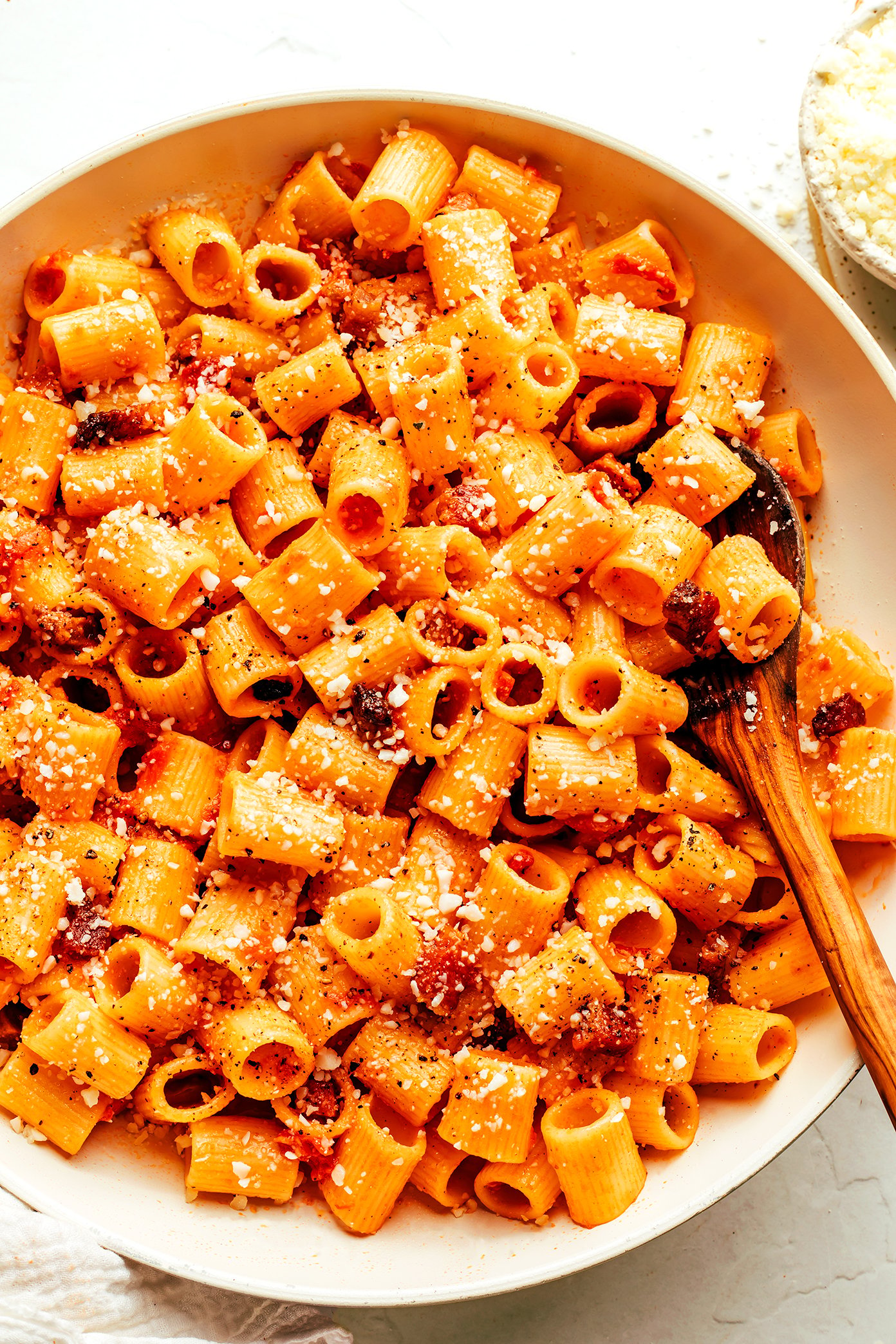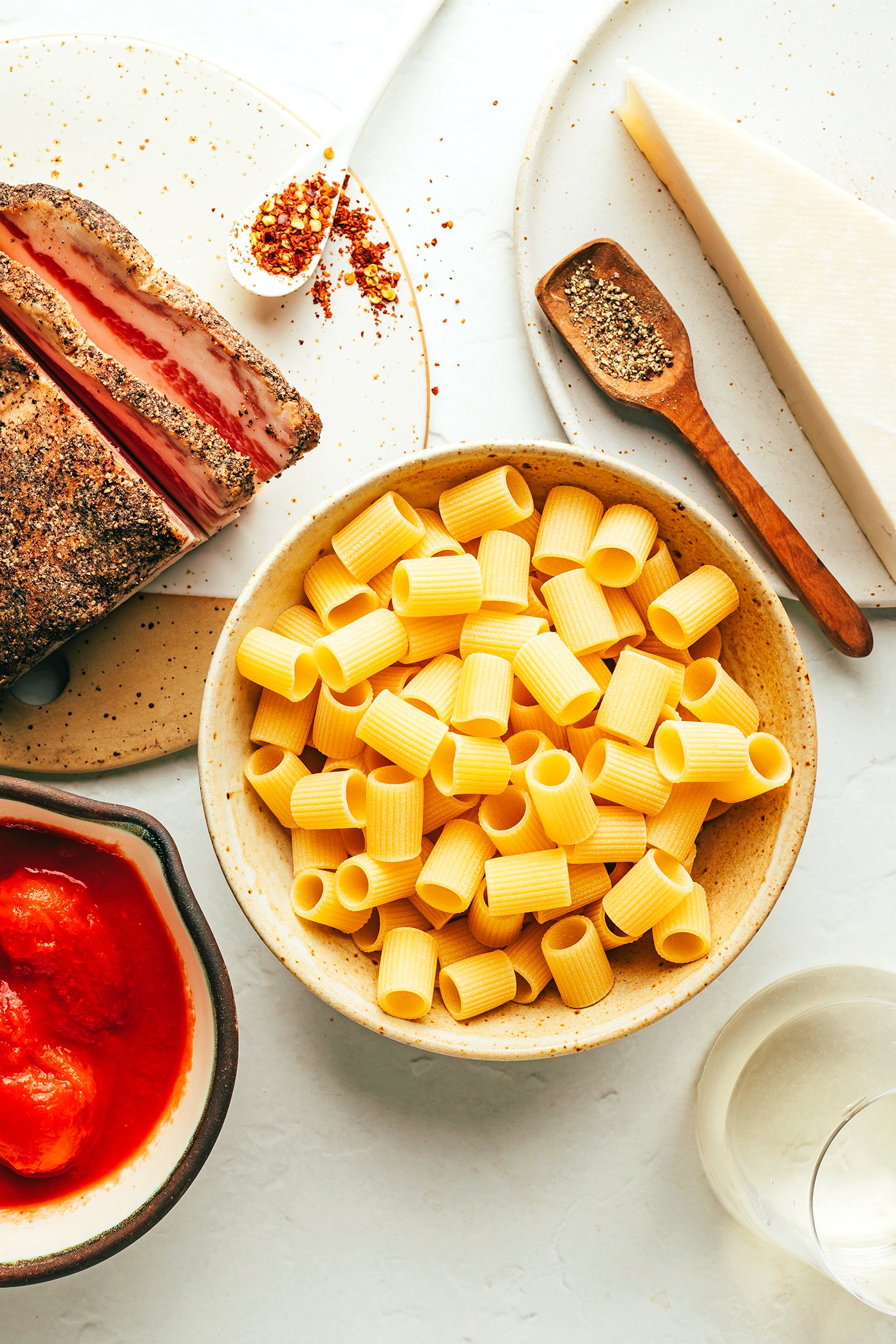https://ift.tt/23wcXlp
This classic Pasta all’Amatriciana recipe is easy to make with 6 traditional ingredients and full of the best rich and savory flavors.

This past summer during our month in Rome, I made it my mission to sample the four classic Roman pastas as often as possible. It’s no exaggeration to say that these four pastas — Cacio e Pepe, Gricia, Carbonara and Amatriciana — are some of my favorite recipes in the entire world. (And one of the reasons I was so eager to return to Rome!) But while they will forever each hold a special place in my pasta-loving heart, it was pasta all’Amatriciana that stole the show on this trip. ♡
Maybe it was because we were traveling during the heart of Italian tomato season. But as the only one of the four pastas that features a red sauce, I’m convinced there’s just something extra-special that happens when tomatoes meet the other famous Roman pasta ingredients. Guanciale shows up to the party with its intensely-savory pork flavor, Pecorino brings the grassy and earthy notes, a splash of dry white wine helps to deglaze the pan, a pinch of hot pepper flakes add a subtle kick of heat, sea salt and black pepper round out the seasonings. And when mixed with sweet San Marzano tomatoes and tossed with perfectly al dente pasta — well, let’s just say that there’s a reason that Amatriciana is the most famous red sauce in the capitol of Italy. It’s full-flavored, ultra-comforting, and absolutely divine.
In Italy, Amatriciana sauce is always served with pasta that is just barely al dente (notably firm with a slight bite, which we learned apparently has the added benefit of giving the pasta a lower glycemic index and making it easier to digest). The versions I ordered in Rome were always served with either bucatini or rigatoni, with varying sizes of guanciale. But my favorites were definitely those that added in a generous amount of hot chili, whose heat was never overpowering but absolutely brings the sauce to life.
The good news for all of us is that classic pasta all’Amatriciana is relatively quick and easy to make. And, I might add, also much less finicky than the other three pastas in terms of technique, in case you’ve ever had issues with cheese sticking in your cacio e pepe or eggs scrambling in carbonara. I’d recommend serving the pasta with a fresh green salad and some roasted veggies, since the Roman pastas famously include zero greens. And if you feel like adding in a glass of wine, a good full-bodied Italian red would be perfect here.
Grazie mille to Italy for bringing the world all of these heavenly pastas. Now let’s make some Amatriciana!







0 comments:
Post a Comment